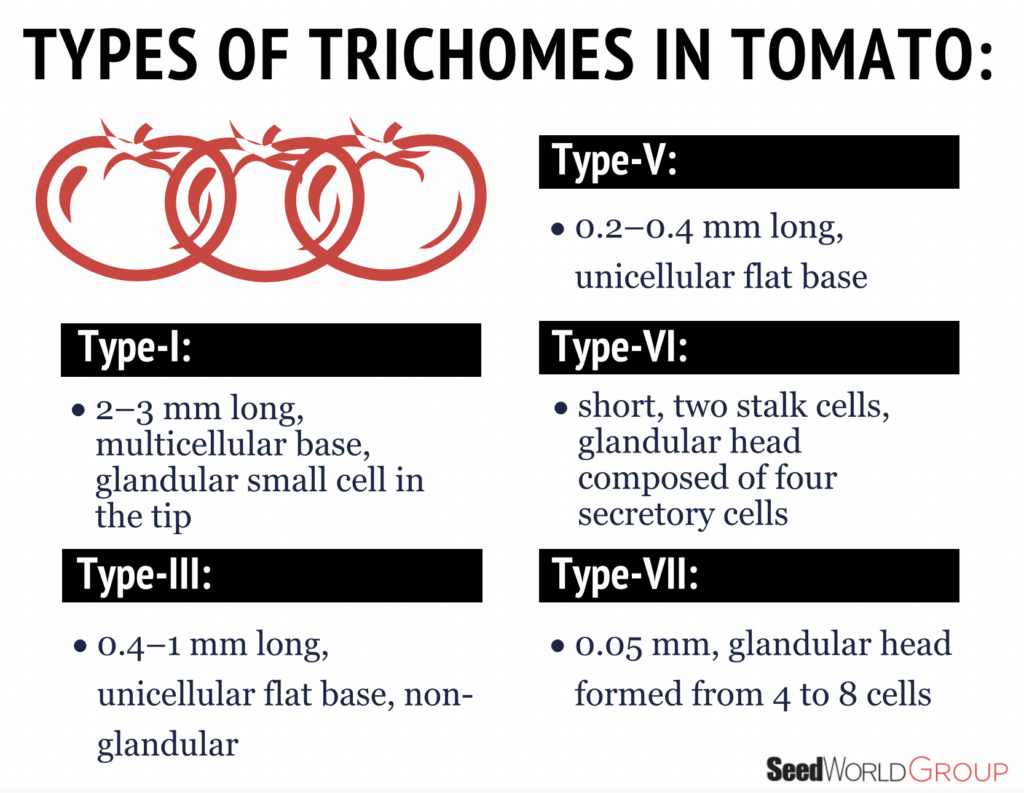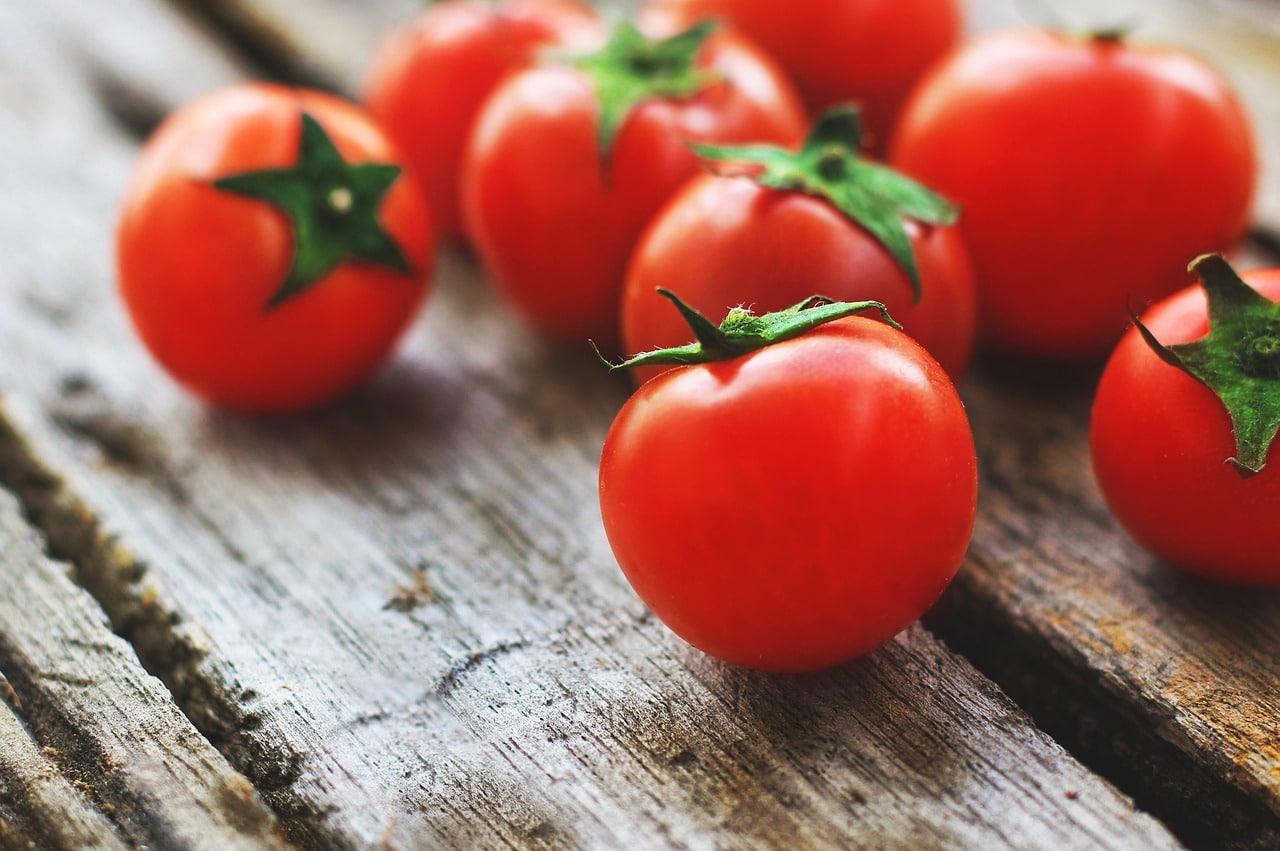Trichomes are extremely important in pest resistance, yet few trichome tomato mutants have been discovered that exemplify the genetic control of multicellular trichome initiation.
Why are these little hairs so crucial to plants?
Non-glandular trichomes function as a mechanical barrier to impede pest movement on plants. Glandular trichomes create specialized metabolites that are harmful and deter or trap pests.
“In numerous species there is a negative correlation between trichome density and insect feeding and oviposition responses, and the nutrition of larvae,” explained an article from the University of Chicago Press Journals. “Trichome may also complement the chemical defense of a plant by possessing glands which exude terpenes, phenolics, alkaloids or other substances which are olfactory or gustatory repellents.”
There are five types of trichomes that have been found in cultivated tomato (Solanum lycopersicum L.).

Wild tomato species differ, as they develop type-II and type-IV trichomes. The latter is identified by a unicellular flat base with a short stalk that attaches to the glandular head. Type-IV trichomes in cultivated tomato species are considered a heterochronic trait because they are only detectable during the early developmental stages, shared a study from Nanjing Agricultural University.
Scientists from Universidad de Almería recently described and characterized hairplus (HAP), a tomato mutant that expresses a high type-I trichome density.
“Fine mapping and genetic complementation analysis showed that HAP encodes a SUVH3 histone lysine methyltransferase. This protein family is mainly composed of histone tail modifying proteins, although some bind methylated DNA, all playing key roles in epigenetic control expression,” according to the study.
This identification clarifies the function of SUVH3 histone methyltransferases in transcriptional control moderated by epigenomic modifications.
“Future works should focus on demonstrating that the reduced feeding damage is correlated with pest resistance of hap mutant plants and whether it is related to a higher amount of exudates or to the physical barriers that the trichomes represent in mutant plants,” said Professor Carmen Capel.
These discoveries show that HAP connects epigenome remodeling to multicellular glandular trichome development and, therefore, has proven to be a valuable genomic tool to improve pest resistance in tomato breeding.
Read More About Crop Mutants:
Sorghum Mutants Offer Solutions for Food Insecurity
Rare Barley Mutation With Potential
Mutant Corn Gene Boosts Sugar in Seeds, Leaves and May Lead to Better Breeding











